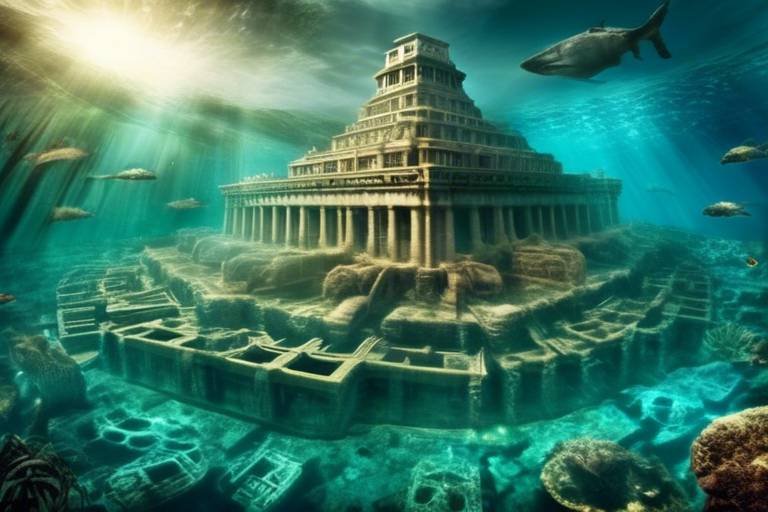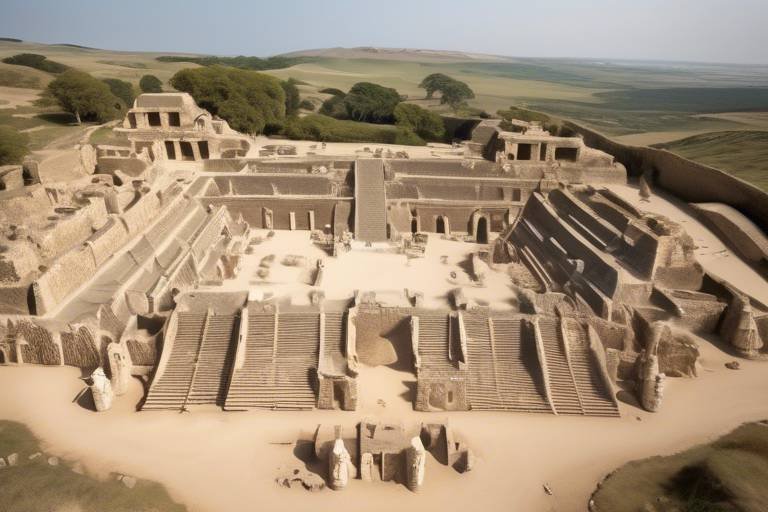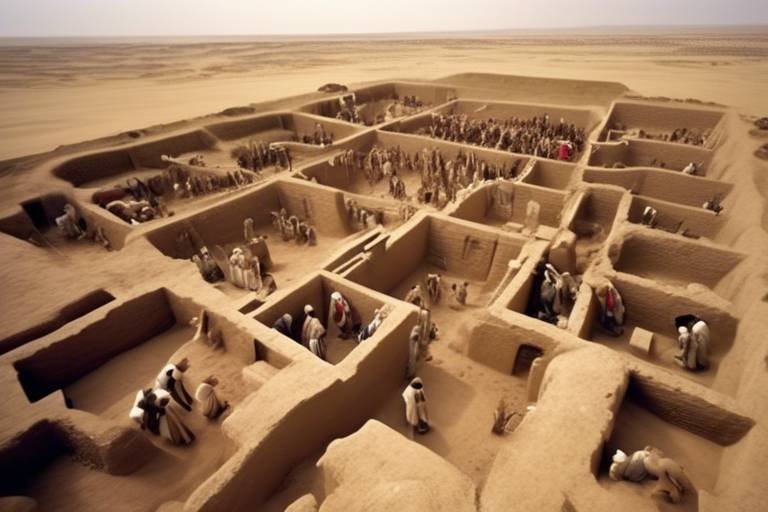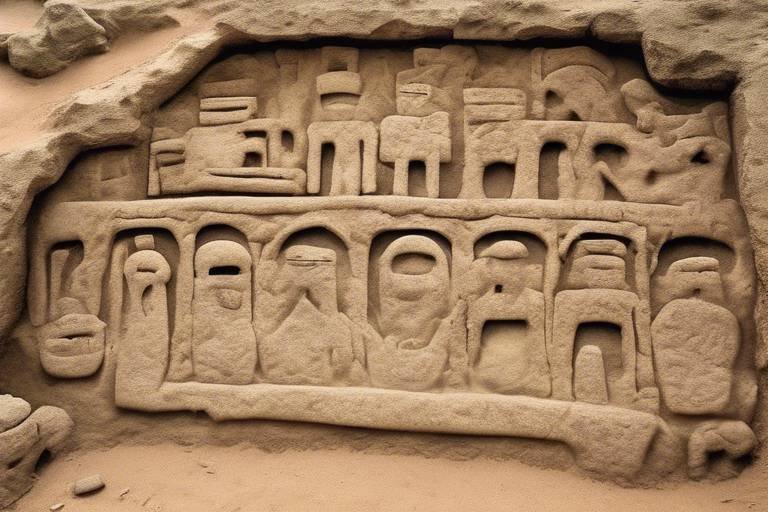The Role of UNESCO in Protecting World Heritage Sites
UNESCO plays a crucial role in safeguarding and preserving World Heritage Sites across the globe through its dedicated World Heritage program. This program aims to identify and protect culturally and historically significant locations of outstanding universal value for future generations to cherish and appreciate. By working closely with countries and local communities, UNESCO strives to ensure the conservation and sustainable management of these invaluable sites.

History of UNESCO's World Heritage Program
Since its establishment in 1972, UNESCO's World Heritage Program has been at the forefront of efforts to preserve and protect culturally and historically significant sites worldwide. The program aims to recognize and safeguard places of outstanding universal value, ensuring their conservation for future generations to appreciate and learn from.
UNESCO's initiative began as a response to the increasing threats faced by heritage sites due to rapid urbanization, industrialization, and conflicts. The organization recognized the need to identify and protect these exceptional locations, leading to the creation of the World Heritage Program.
Over the years, the program has evolved to encompass a diverse range of sites, including natural landscapes, historic monuments, and cultural traditions. UNESCO works closely with member states to nominate and inscribe sites that meet the stringent criteria for inclusion on the World Heritage List.
Through the World Heritage Program, UNESCO aims to promote international cooperation in the preservation of cultural and natural heritage, fostering a sense of shared responsibility for protecting these unique and irreplaceable treasures.

Criteria for World Heritage Site Selection
Exploring how UNESCO works to preserve and safeguard culturally and historically significant locations around the globe through its World Heritage program.
Tracing the origins and evolution of UNESCO's initiative to identify and protect sites of outstanding universal value for future generations.
When it comes to selecting a site as a World Heritage Site, UNESCO follows stringent criteria to ensure its exceptional value and integrity. These criteria include the site's outstanding universal value, authenticity, and integrity. The site must also meet at least one out of ten selection criteria, such as representing a masterpiece of human creative genius or bearing a unique or exceptional testimony to a cultural tradition.
Discussing the various threats and challenges that World Heritage Sites encounter, from natural disasters to human activities.
Exploring how climate change poses a significant threat to the preservation of World Heritage Sites worldwide, leading to erosion and deterioration.
Analyzing the negative impacts of over-tourism on World Heritage Sites, including environmental degradation and cultural disruption.
Highlighting the conservation projects and initiatives undertaken by UNESCO to safeguard and restore World Heritage Sites.
Emphasizing the importance of engaging local communities in the preservation and management of World Heritage Sites to ensure sustainable protection.
Considering the future challenges and opportunities facing UNESCO and World Heritage Sites in the 21st century.

Challenges Faced by World Heritage Sites
World Heritage Sites face a myriad of challenges that threaten their integrity and longevity. These sites, which hold immense cultural and historical significance, are often at risk due to various factors ranging from natural disasters to human activities. One of the most pressing issues affecting these sites is the impact of climate change. The rising global temperatures and extreme weather events pose a significant threat to the preservation of World Heritage Sites worldwide. Erosion, flooding, and deterioration are just some of the consequences of climate change that endanger these precious locations.
In addition to climate change, over-tourism has emerged as a major concern for World Heritage Sites. The influx of tourists to these sites can lead to environmental degradation, overcrowding, and cultural disruption. The delicate balance between preserving the heritage value of these sites and accommodating the growing number of visitors is a constant challenge faced by site managers and conservationists.
Furthermore, the encroachment of urban development and infrastructure projects near World Heritage Sites poses a significant threat to their authenticity and integrity. The rapid expansion of cities and industrial activities in the vicinity of these sites can result in pollution, habitat destruction, and visual impact, jeopardizing their cultural and historical value.
Moreover, inadequate funding and resources for conservation efforts present a significant challenge for the sustainable management of World Heritage Sites. The lack of financial support and technical expertise can hinder the implementation of necessary conservation projects and maintenance activities, putting these sites at risk of neglect and deterioration.
Addressing these challenges requires a concerted effort from governments, local communities, and international organizations like UNESCO. Collaborative conservation strategies, community engagement, and sustainable tourism practices are essential to ensuring the long-term protection and preservation of World Heritage Sites for future generations to appreciate and enjoy.

Climate Change Impact
Climate change poses a severe threat to the preservation of World Heritage Sites worldwide, significantly impacting their integrity and longevity. The rising global temperatures and erratic weather patterns associated with climate change have led to increased risks of erosion, flooding, and deterioration of these culturally and historically significant locations. The delicate balance of ecosystems supporting many World Heritage Sites is being disrupted, endangering the unique flora and fauna that inhabit these areas.
Moreover, the melting of glaciers and permafrost due to climate change is accelerating the degradation of certain World Heritage Sites, such as polar regions and high-altitude sites. The loss of ice and snow cover not only alters the landscape but also affects the cultural heritage and archaeological remains preserved within these frozen environments. As the world continues to warm, the impact of climate change on World Heritage Sites is becoming more pronounced and urgent.

Over-tourism Concerns
Over-tourism has emerged as a pressing concern for World Heritage Sites, posing significant challenges to their preservation and sustainability. The exponential growth in tourism activities at these iconic locations has led to a myriad of negative impacts, ranging from environmental degradation to cultural disruption. The sheer volume of visitors often exceeds the carrying capacity of these sites, resulting in overcrowding, littering, and strain on infrastructure.
Moreover, the influx of tourists can alter the social fabric of local communities, leading to commercialization and loss of authenticity. The delicate balance between tourism and conservation becomes increasingly precarious as popular sites become overrun with visitors, compromising the very essence that makes them unique and worthy of protection.
UNESCO recognizes the detrimental effects of over-tourism on World Heritage Sites and advocates for sustainable tourism practices to mitigate these challenges. By promoting responsible travel behavior, raising awareness about the importance of cultural and natural heritage, and working closely with local stakeholders, UNESCO strives to find a delicate equilibrium that ensures the long-term viability of these sites.

UNESCO's Conservation Efforts
UNESCO's Conservation Efforts play a crucial role in preserving and safeguarding World Heritage Sites for future generations. Through a variety of projects and initiatives, UNESCO aims to ensure the protection and restoration of these culturally and historically significant locations.
One of the key aspects of UNESCO's conservation efforts is the implementation of sustainable practices that balance the need for site preservation with the demands of tourism and development. By promoting responsible tourism and encouraging eco-friendly practices, UNESCO strives to minimize the negative impact of human activities on World Heritage Sites.
Furthermore, UNESCO works closely with local communities to involve them in the conservation and management of these sites. By engaging with residents and stakeholders, UNESCO fosters a sense of ownership and responsibility towards the protection of World Heritage Sites, ensuring their long-term sustainability.
In addition to community involvement, UNESCO also collaborates with various international organizations, governments, and experts to share knowledge and best practices in conservation. By leveraging expertise from diverse sources, UNESCO enhances its conservation efforts and implements innovative solutions to address the unique challenges faced by World Heritage Sites.
Moreover, UNESCO provides technical assistance and financial support to countries in need to carry out conservation projects effectively. By offering resources and expertise, UNESCO empowers nations to protect and preserve their cultural and natural heritage, fostering a sense of global cooperation and solidarity in conservation efforts.

Community Involvement in Conservation
Community involvement plays a crucial role in the conservation of World Heritage Sites. By engaging local communities in the preservation and management of these sites, UNESCO ensures sustainable protection for future generations. Community members are often the most knowledgeable about the history, culture, and significance of these sites, making their involvement essential in decision-making processes.
Through collaborative efforts with local stakeholders, UNESCO promotes a sense of ownership and responsibility among communities towards the conservation of World Heritage Sites. This participatory approach not only enhances the effectiveness of conservation projects but also fosters a deeper connection between the community and the site itself.
By involving local residents in conservation activities, UNESCO empowers communities to become active participants in safeguarding their cultural and natural heritage. This engagement not only contributes to the preservation of World Heritage Sites but also promotes sustainable development and tourism practices that benefit both the site and the local community.

Future Prospects for World Heritage Sites
The future of World Heritage Sites is both promising and challenging. As we look ahead to the 21st century, it is crucial to address the evolving threats and opportunities that these iconic locations face. One of the key prospects for World Heritage Sites lies in leveraging technology and innovation to enhance conservation efforts. By harnessing the power of digital tools, such as virtual reality and augmented reality, UNESCO can engage a global audience in the preservation of these sites, fostering a deeper appreciation for their cultural and historical significance.
Furthermore, sustainable tourism practices are expected to play a vital role in the future of World Heritage Sites. Balancing the economic benefits of tourism with the need to protect these fragile locations is a delicate yet essential task. Implementing responsible tourism strategies, promoting off-peak visitation periods, and limiting visitor numbers can help mitigate the negative impacts of over-tourism and ensure the long-term sustainability of World Heritage Sites.
Collaboration and partnerships will also be key drivers of success for World Heritage Sites in the years to come. Engaging with governments, local communities, non-profit organizations, and private sector stakeholders can facilitate the implementation of comprehensive conservation plans and secure the necessary resources for site management. By fostering a sense of shared responsibility and ownership, UNESCO can mobilize a diverse range of actors to support the protection and preservation of these irreplaceable treasures.
Frequently Asked Questions
- What is the purpose of UNESCO's World Heritage program?
The primary goal of UNESCO's World Heritage program is to identify, protect, and preserve cultural and natural sites of outstanding universal value for future generations. These sites serve as a testament to human creativity, ingenuity, and the beauty of the natural world.
- How are World Heritage Sites selected?
World Heritage Sites are selected based on strict criteria that assess their cultural, historical, or natural significance. These criteria ensure that designated sites are exceptional and possess outstanding universal value that should be preserved for the benefit of humanity.
- What are some common challenges faced by World Heritage Sites?
World Heritage Sites face various challenges, including threats from climate change, over-tourism, natural disasters, and human activities. These challenges can endanger the integrity and preservation of these significant locations.
- How does UNESCO contribute to the conservation of World Heritage Sites?
UNESCO undertakes conservation efforts through various projects and initiatives aimed at safeguarding and restoring World Heritage Sites. These efforts often involve engaging local communities in the preservation and management of these sites for sustainable protection.
- What does the future hold for World Heritage Sites?
The future prospects for World Heritage Sites involve addressing new challenges such as technological advancements, changing environmental conditions, and evolving societal needs. UNESCO continues to adapt its strategies to ensure the long-term preservation of these valuable sites.



















